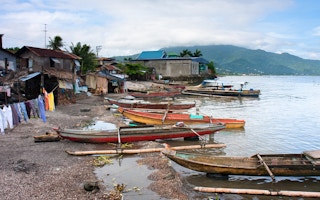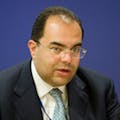When the Millennium Development Goals (MDG) deadline expires next year, the world will be able to point to several important achievements since their launch in 2000. Extreme poverty has been halved during this period; an estimated 100 million slum-dwellers have gained access to safe drinking water, and millions to health care; and large numbers of girls are now receiving an education. But considerable unfinished business and significant performance discrepancies remain.
The post-2015 development agenda will continue where the MDGs left off, while adding further objectives relating to inclusion, sustainability, jobs, growth and governance. The success of the coming Sustainable Development Goals (SDGs) will depend on how new programs are developed, implemented and measured.
Strong economic growth enables people to improve their lives and creates space for new ideas to thrive. But such growth is often accompanied by environmental degradation, which diminishes human health and quality of life, threatens water supplies and compromises ecosystems, impeding growth for future generations. Moreover, short-term growth that erodes natural capital is vulnerable to boom-and-bust cycles, and can cause people who live close to the poverty line to fall far below it.
Taking a longer-term view of growth and accounting for social, economic and environmental equity must be a top priority for the post-2015 development agenda. Discussion of the SDGs is now taking into consideration the need to incorporate food, water, and energy security, together with urban planning and biodiversity. But translating prospective goals into actions at the country level will not be feasible without measurable and meaningful indicators to guide policy and measure progress.
One method of measurement is “natural capital accounting,” which assesses the value of natural resources in development planning and national accounts, just as a family would account for their home’s value – and the cost of maintaining it – when deciding how much of their regular income to consume. A recent World Economic Forum report proposes a “dashboard” for inclusive and sustainable growth. This model brings together natural capital accounting, a human-opportunity index, a gender-gap index, measures of public investment as a percentage of GDP, a competitiveness index, indicators of shared prosperity, and disaggregated unemployment data.
“
Only by shifting to a broader understanding of growth and development can the world address the pressing problems of inequality and sustainability. Placing that understanding at the heart of the SDGs will help to improve the health and wellbeing of all societies long into the future.
A World Bank-led partnership, Wealth Accounting and the Valuation of Ecosystem Services (WAVES), shows governments how certain behavior depletes natural assets, and how natural capital accounting can help to establish more sustainable development policies. Following a campaign at the 2012 Rio+20 Summit, 70 governments, including those representing 40 middle- and low-income countries, endorsed natural capital accounting.
The method has already been put to good use around the world. “Forest accounts,” for example, have revealed that Guatemala has the fastest deforestation rate in Central and South America, with most uncontrolled logging being carried by households for their cooking needs. This information has spurred the Guatemalan government to review the country’s forestry law, and to fund new strategies to control firewood use, prevent unauthorized logging and encourage families to use alternative energy sources.
Botswana’s attempts to diversify its economy are constrained by water shortages; but “water accounts” are helping the government to identify sectors – including agriculture, mining and tourism – that can grow with minimal water consumption.
In the Philippines, where 60 per cent of GDP is generated by industries and associated services in the Laguna Lake region of Metro Manila, pollution and siltation has already reduced the lake’s depth by one third. “Ecosystem accounts” have become instrumental in determining how better to manage this resource. These accounts are also being used to improve forest management in the Indian state of Himachal Pradesh, where forests are a vital resource for two major growth sectors, tourism and hydropower generation.
These experiences are vital in shaping the post-2015 development agenda. Incorporating sustainability forces governments and businesses to consider the environmental impact of their decisions. A UN report calls on all governments to adopt natural capital accounting so that their sustainability efforts can be consistent, accurate and comparable over the long term. Institutionalizing sustainability in this way will make it an intrinsic part of day-to-day governance.
Only by shifting to a broader understanding of growth and development can the world address the pressing problems of inequality and sustainability. Placing that understanding at the heart of the SDGs will help to improve the health and wellbeing of all societies long into the future.
Mahmoud Mohieldin is the World Bank’s Corporate Secretary and President’s Special Envoy on Millennium Development Goals, the Post-2015 process, and financial development. This post originally appeared on the World Economic Forum blog.











